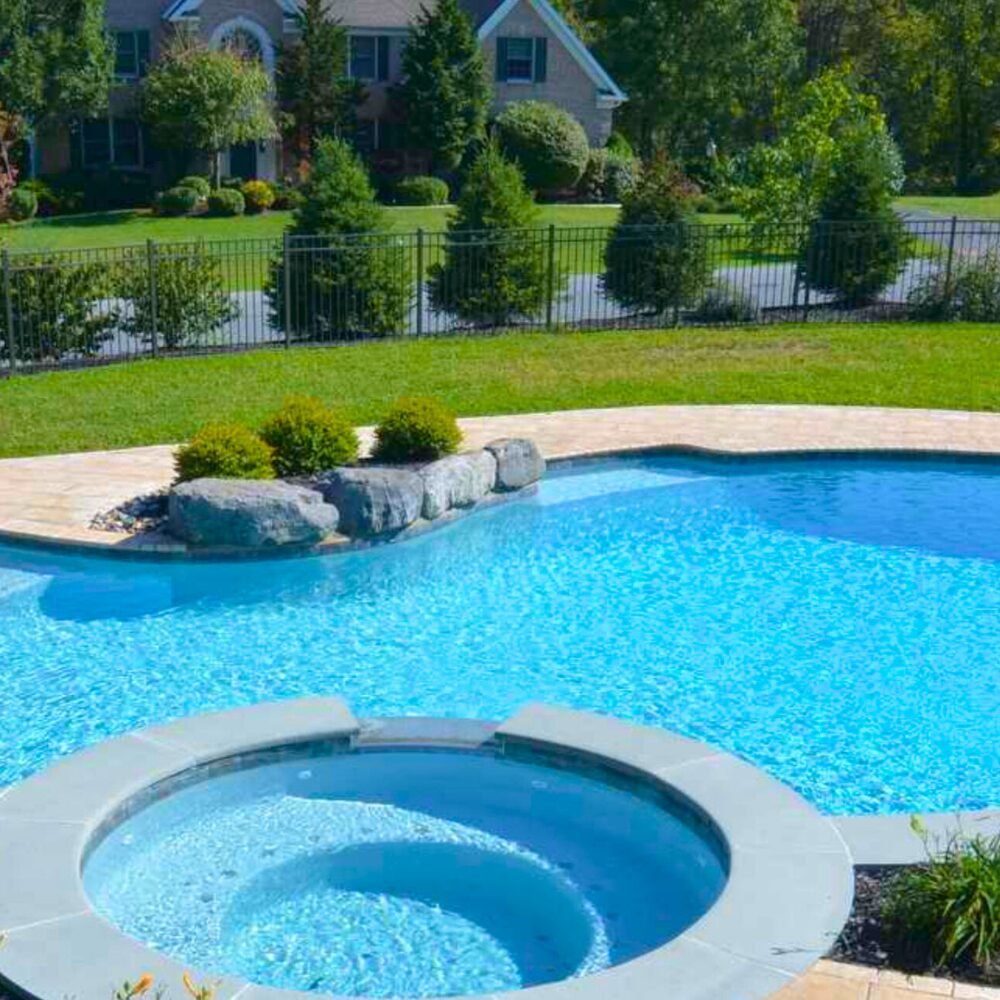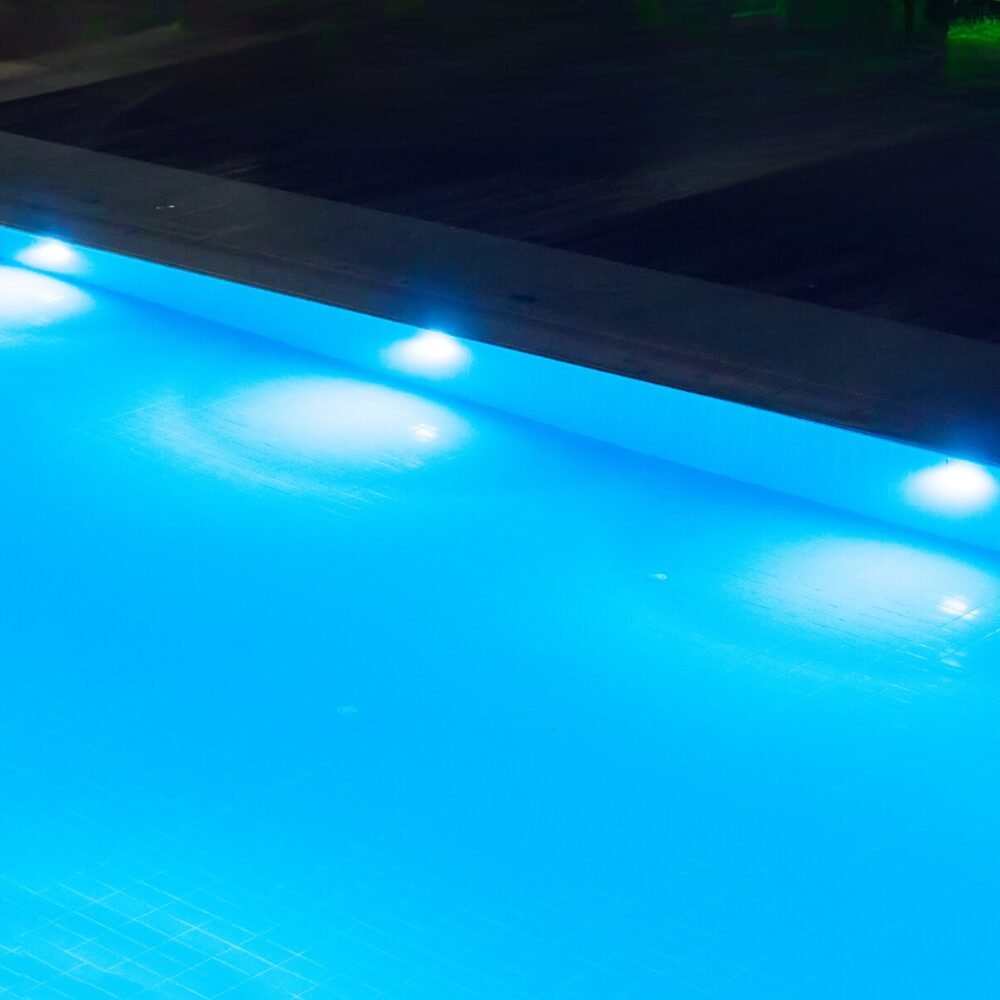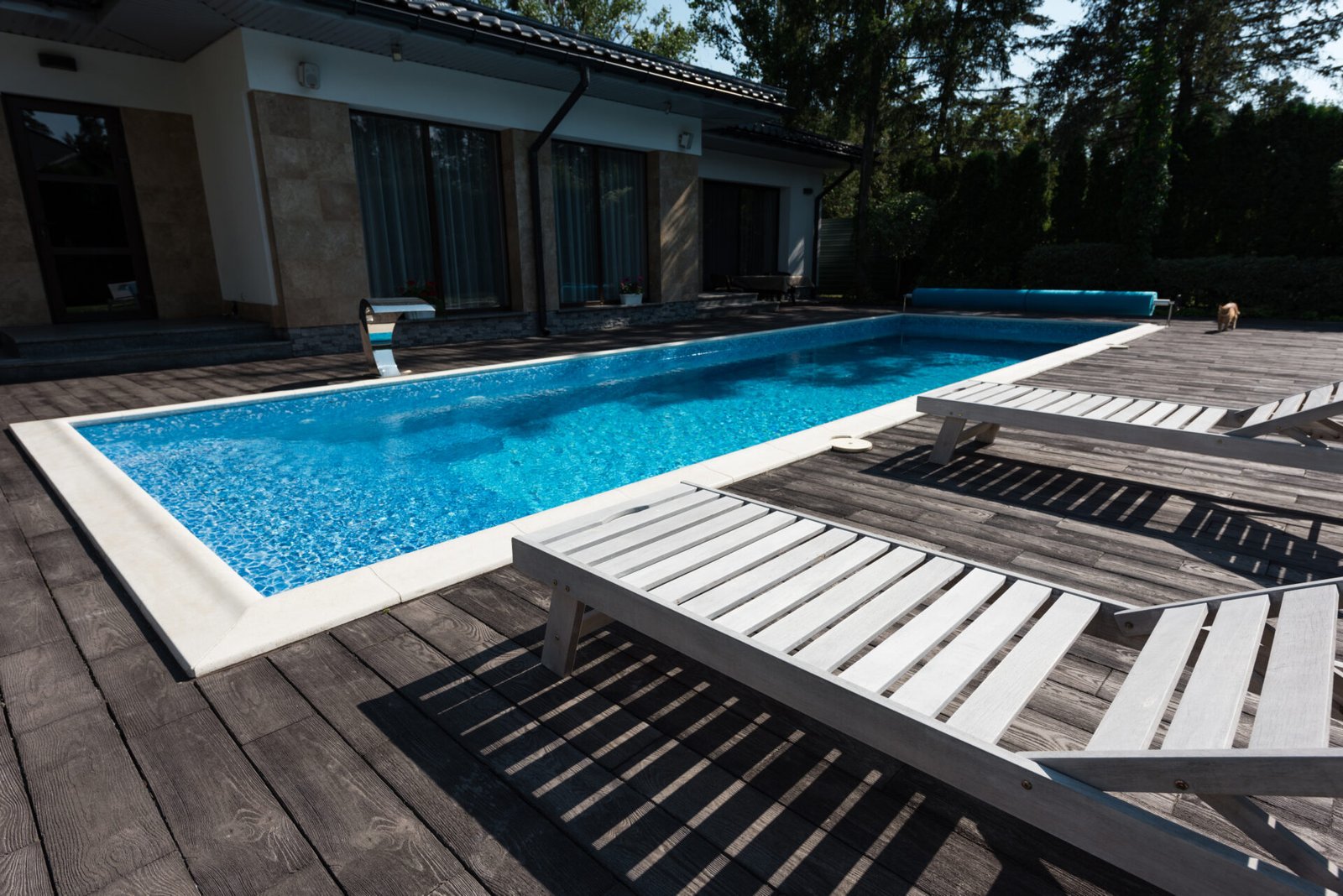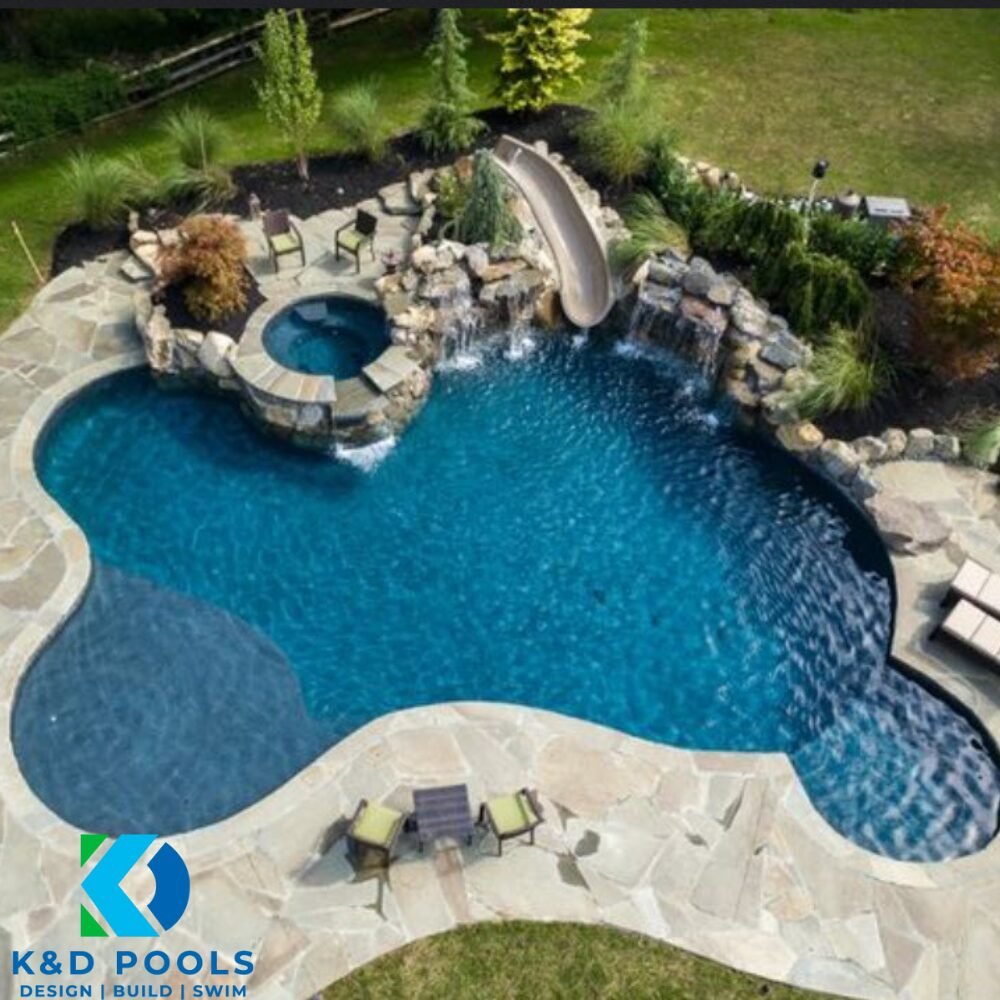- Home
- »
- Northern Virginia Pools
Top-rated Pool Builders in Fredericksburg VA
Creating Custom Pools in Fredericksburg VA Locals Love!
Get a Free Estimate!
Get a Free Estimate!
Custom Pools Northern Virginia Homeowners Love
Imagine transforming your backyard into a personal paradise with a custom-built pool designed just for you. Whether you dream of relaxing poolside with friends or creating a fun space for family gatherings, K&D Contracting is here to bring your vision to life. As the go-to experts for pools in Fredericksburg VA locals recommend, we specialize in creating luxurious, custom pools that elevate outdoor living and fit seamlessly with your home.
Having a pool in your backyard isn’t just about fun—it’s about enhancing your lifestyle, boosting your property value, and creating an oasis where unforgettable memories are made. With custom pools Fredericksburg VA residents love, you’re investing in more than just a pool; you’re creating a space that fosters connection, relaxation, and recreation. Whether it’s a sleek modern design or a natural freeform pool that blends with the landscape, K&D Contracting ensures every detail is crafted to meet your expectations. Our goal is to deliver a pool that not only complements your outdoor space but also becomes the heart of your home for years to come.
Choosing the right team to build your pool makes all the difference. At K&D Contracting, we combine expert design, durable materials, and energy-efficient features to ensure your pool stands the test of time. Whether you’re looking for a pool with unique features or a simple design that complements your outdoor space, we bring your ideas to life with precision and care. If you’re ready to dive into the world of pools in Fredericksburg VA, let’s start creating your ultimate retreat today!
High Quality Fredericksburg Pools Tailored to Your Vision
Creating the perfect pool begins with understanding your needs. At K&D Contracting, we specialize in crafting custom Fredericksburg pools designed to meet your lifestyle and preferences. Whether you’re envisioning a luxurious escape or a family-friendly space, we’ve got you covered.
Why Invest in a Custom Pool?
A custom pool offers more than just a place to swim—it transforms your outdoor space into a personal destination that enhances both your lifestyle and your property. A well-designed pool can significantly increase your home’s resale value, making it a smart investment for the future. It also fosters connection by creating endless opportunities for family bonding, entertainment, and unforgettable memories. Beyond that, a pool adds convenience by giving you a private retreat right in your backyard, saving you the hassle of traveling for relaxation. Finally, it supports wellness by providing a convenient and enjoyable way to exercise, unwind, and improve your overall quality of life.
Custom Pool Features
With K&D Contracting, your pool can be enhanced with premium features:
- Infinity edges for a sleek, modern look
- Waterfalls or deck jets for an elegant touch
- Integrated spas for ultimate relaxation
- LED lighting to enjoy your pool day or night
- Durable and stylish pool decks
When you choose K&D Contracting for your pool needs, you’re not just building a pool; you’re investing in your quality of life and creating a lasting retreat. Our expert team is dedicated to delivering custom-designed Fredericksburg pools that reflect your vision and elevate your outdoor living space. Turn your backyard dreams into reality with a pool that perfectly suits your lifestyle and enhances your home.
Craftsmanship
Designs
Materials
Service
Why Choose K&D Contracting for Your Pool Needs?
When it comes to building pools, K&D Contracting stands out for many reasons. Our commitment to quality and client satisfaction ensures that every pool we build exceeds expectations and enhances your outdoor living experience. As a locally trusted contractor, we understand the specific needs of homeowners in Northern Virginia, from design to durability. We offer:

Tailored Designs
Each pool is customized to suit your lifestyle and space.

Experienced Team
Years of expertise ensure flawless results every time.

Energy-Efficient Options
We incorporate features that are eco-friendly and cost-effective.

Comprehensive Service
From permits to final touches, we handle every detail.
NORTHERN VIRGINIA CUSTOM POOL BUILDERS
Premium Woodbridge Pools for Every Outdoor Space
For homeowners looking to elevate their backyard, Woodbridge pools provide the ultimate way to combine luxury and functionality. Whether you envision a sleek, modern design or a family-friendly oasis, K&D Contracting works closely with you to bring your dream pool to life. Every pool we design is tailored to your unique needs, ensuring it enhances your property while seamlessly blending with your outdoor space.
At K&D Contracting, we understand that pools Woodbridge VA homeowners desire need to balance style, practicality, and durability. Our custom pools are designed with energy-efficient features that reduce maintenance while offering long-term value. From the initial concept to the finishing touches, we prioritize craftsmanship and attention to detail, ensuring your pool is as functional as it is beautiful.
Building a pool is no small task, and there are times when professional expertise is essential. From choosing the perfect layout to ensuring the structural integrity of your pool, hiring experienced contractors ensures your investment will stand the test of time. With a proven track record for delivering stunning designs, K&D Contracting makes Woodbridge pools a reflection of your lifestyle and preferences.



The Most Innovative Pools in Manassas VA Residents Swear By
Homeowners in Manassas deserve nothing but the best when it comes to creating a stunning outdoor retreat. At K&D Contracting, we specialize in designing and building pools in Manassas VA that turn ordinary backyards into extraordinary escapes. Whether you dream of a serene infinity pool or a family-friendly space perfect for gatherings, our team ensures every detail is handled with precision and care.
Read More
From the initial design consultation to the final touches, we focus on creating pools that align with your vision while enhancing your property’s value. Our approach ensures that your new pool is not only beautiful but also functional and long-lasting. With years of experience crafting custom pools, we bring creativity and expertise to every project, delivering results that exceed expectations.
Now is the perfect time to start planning your dream pool. If you’re looking to start building your dream oasis in the fall or winter, you can ensure our custom quality pools in Manassas VA will be built to the highest standard and ready for you and your family to enjoy during peak summer months. Don’t wait to transform your backyard—trust K&D Contracting to bring your vision to life with a pool that’s as unique as you are.
What Our Clients Say
Every pool we build is more than just a project—it’s a partnership to bring your vision to life. From sleek, modern designs to family-friendly backyard retreats, K&D Contracting is proud to create spaces that resonate with joy, connection, and relaxation. But don’t take our word for it—our clients love sharing how their pools have enhanced their lives.
What Makes K&D Contracting Stand Out?
A seamless process from design to completion.
Pools built with care, precision, and the highest-quality materials.
Custom solutions that reflect your unique lifestyle and home.
Excellent
Based on 71 reviews

K&D is amazing and their work is too! They did two projects for us, a crawlspace encapsulation and our master bath. Nothing but the nicest people, they are always on time first thing in the AM. We are so happy with their work. Their prices are very comparable to other contractors in the area. We are so happy with them!

K&D 's work is exceptional! They poured a concrete pad under my deck, put in a retaining wall, and replaced the stairs on my deck. Their work is very professional and their personnel are all friendly and went out of their way to ensure I was completely satisfied. I highly recommend them!

Bottom Line Up Front: It can be tough to get on their schedule, but their work is top notch.So I'm going to start off with the bad first to set expectations. The main problem that you might have with K&D is getting on their schedule.They were a subcontractor for a pool company that we decided to use for installing a pool (surprise) in our backyard. At first K&D was only on the hook for the excavation, and within two days of getting the permit approved from the county, they we out pulling 12-14 hour days to get the initial stage of the project complete. Then... the other two contractors, the concrete guys and electricians bailed on the pool company. So K&D took on the job. I don't know exactly where the communication breakdown happened, but it took another three weeks to get back on schedule (it may not sound like a big deal, but you risk some nasty stuff growing in your pool during that time). Anyways, once they got out here to finish the work, things went quickly again, and their work is amazing.There is a reason that it is hard to get on their schedule... they are in *high demand*!Oh yeah... and they are just some really nice folks too.Highly recommend them.

We recently built a new home and chose K and D contracting to add a patio off the back. We are so happy with the whole process. Anthony was prompt in answering our initial inquiry online and guided us through choosing the right design (we chose stamped concrete). They provided images from previous work with different color schemes. The workers were always prompt and hard working. (Hardest workers I have ever seen!!!!) We made some last min changes to the stairs day of install and were receptive and worked them into the design. We had a little issue with the sealant bubbling due to our yard in the back is full sun and it was very hot those days They were great and sent someone right out to fix it. Overall I can’t recommend them enough. I will be using them again on other projects

K&D completed some excavation work for us and we are so happy with the results! They went above and beyond in the re-grading of our back yard.....In addition to finding a way to use the excess dirt from the project in our yard so we didn't have to haul it away, they also completed the grading and sloping of our yard in a way to better manage water runoff from storms (which we used to have issues with) and created a gorgeously sloped back yard that is fully functional with lots of usable area. I didn't think our yard had the potential that they made happen! The employees were great to work with, they take a lot of care and pride in their work, and communication was top notch. We will definitely hire them again for other projects and will recommend them to our friends and family!

Working with K&D was just a dream! Every person from sales, construction teams, project management, and overall communications was the best that I've ever experienced. Anthony and Obed were both great at communicating for each project and helping me with ideas and the results are just amazing. They installed a stamped concrete patio and sealed it, along with sealing the wood posts and joists for the porch above it. They also installed a black aluminum fence around the backyard, and both look great! Inside the home, they installed LVP flooring in my recently finished basement, installed a kitchen backsplash, and window sills throughout home and painted them. The kitchen has that pop now with a very attractive backsplash around the walls over the counters. The quality and fine detail of each project is simply incredible. Everyone gives me compliments about how good my new home looks now with these additional features added. I plan for K&D to finish the garage in the Spring, and I'll definitely use them for any future projects. I can't thank them enough, and I highly recommend them for all of your home construction needs.
There were 2 jobs they did for us. First was to pour a concrete pad and driveway where I had outlined in the yard. They put in full days of work over a 3 day period and it was done fully to my expectations and then some. The 2nd job was to repair and replace out front porch steps. We are very pleased with both jobs K&D did for us. Before they started I had gotten a very good recommendation of their work from a friend of mine and now I am willing to personally recommend them also.
Join the growing list of Northern Virginia homeowners who trust K&D Contracting to deliver breathtaking pools that inspire lasting memories. Ready to be next? Let’s turn your backyard into a masterpiece today!
What To Know About Buying A Pool in Northern Virgina
These items cover local codes, zoning, permits, inspections, and other legal issues related to pool ownership.
- Check local building codes for pool construction.
- Understand zoning regulations that affect pool placement.
- Review homeowner association rules regarding pools.
- Review local safety regulations for pool enclosures.
- Confirm if there are any HOA restrictions affecting pool design.
- Determine what permits are required by local authorities.
- Familiarize yourself with the permit application process.
- Research any regional water regulations that might apply.
- Understand the local inspection standards for pools.
- Confirm that you meet all legal and regulatory requirements for pool ownership.
This category addresses decisions about the pool’s type, size, shape, materials, and the construction process.
- Decide between an in-ground or above-ground pool
- Evaluate the ideal pool size for your property
- Consider the best pool shape for your yard layout
- Assess the excavation requirements for your pool type
- Compare different pool material options
- Look into various pool finish alternatives
- Decide on the depth of your pool
- Consult with a pool installation expert
- Consider having a pool design consultation
- Learn about the typical construction timeline
- Research the expected longevity of pool materials
- Evaluate alternative pool surfaces such as tile or aggregate finishes
- Research options for updating or modernizing pool features
- Look into the possibility of adding built-in water features
- Consider a custom design for a unique pool
- Review current local trends in pool design
- Explore additional pool accessories and add-ons
- Check the long-term durability of different pool construction methods
These points focus on pool hardware, automation, water treatment, and energy efficiency
- Explore pool heating options that work locally
- Compare different filtration systems
- Evaluate the efficiency of various pool pumps
- Look into pool lighting solutions for nighttime use
- Explore pool automation systems for convenience
- Consider options for pool covers to reduce debris and heat loss
- Plan for electrical needs related to pool equipment
- Check requirements for pool heaters and their installation
- Understand the necessary plumbing for pool systems
- Research water-saving pool technologies
- Consider energy-efficient pool equipment options
- Check if solar heating options are available nearby
- Understand the differences between saltwater and traditional chlorinated pools
- Weigh the pros and cons of each water treatment system
- Study the design of the pool’s water circulation system
- Decide if you want integrated lighting or sound systems
- Understand the cost of adding smart technology to your pool
- Explore options for remote control of pool systems
- Consider automated pool cover systems for convenience
- Look into insulation options for maintaining water temperature
These items address the upkeep, cleaning, chemical management, and service contracts for running a pool
- Investigate systems for water quality maintenance
- Research different pool chemical management systems
- Look at automated pool cleaning systems
- Estimate ongoing maintenance costs
- Research local services for pool maintenance and cleaning
- Understand seasonal maintenance tasks
- Plan for winterizing your pool if necessary
- Look into pool maintenance contracts offered by service companies
- Ask about the repair history of pools in the area
- Consider the cost and frequency of chemical treatments
- Evaluate available water testing equipment
- Research options for recycling pool water
- Identify local suppliers for pool parts and chemicals
- Plan the frequency of pool maintenance routines
- Factor in seasonal usage patterns for your pool
- Confirm local availability of repair services
- Research pool net covers to help keep debris out
- Plan for safe storage of pool chemicals
This grouping covers budgeting, cost comparisons, financing, and how a pool might affect your property’s value and taxes
- Factor in the installation cost
- Research local energy costs related to pool operation
- Contact multiple pool construction companies for quotes
- Read reviews and ask for references from previous customers
- Consider how a pool might affect your property's resale value
- Verify insurance requirements for pool ownership
- Consider how owning a pool could impact property taxes
- Explore financing options available for pool construction
- Compare the overall cost of the pool to its potential value
- Study local market trends for pool-equipped homes
These points cover physical safety measures, secure enclosures, alarms, and accessibility features to keep pool users safe
- Plan for safety fencing around the pool area
- (Also noted under Regulations) Review local safety regulations for pool enclosures
- Think about privacy measures such as screens or fencing
- Evaluate gate design and security options
- Investigate pool alarm systems for added safety
- Look into local safety programs for pool owners
- Verify the installation requirements for pool fencing
- Consider features that improve accessibility for all users
These items focus on the pool’s integration with your yard, including landscaping, decking, placement, and overall outdoor appeal
- Plan for landscaping around the pool area
- Decide on the best type of pool decking
- Consider the pool's placement on your property
- Ensure easy access from your home to the pool
- Look into noise reduction measures around the pool
- Research local landscaping services experienced with pool areas
- Review how a pool may enhance your outdoor lifestyle
- Evaluate the potential impact of the pool on neighboring properties
These points involve understanding your site’s natural conditions and local utilities that might affect pool installation and operation
- Determine if your soil conditions are suitable
- Check the water table level in your area
- Research drainage requirements to avoid water issues
- Identify any nearby utility lines that might be affected
- Confirm the water supply requirements for filling and maintaining the pool
- Look into local water quality standards for pool use
- Research how the local climate might affect pool performance
- Understand how regional weather can affect pool water conditions
Things that can go wrong when buying a Deck and what to do
- agging Joists – Add additional joist hangers or sistering boards.
- Rotting Support Posts – Replace rotted posts with pressure-treated or composite materials.
- Improperly Installed Ledger Board – Ensure it's properly bolted to the house, with flashing to prevent water damage.
- Deck is Not Level – Check post alignment and reinforce footing supports.
- Creaking Sounds When Walking – Secure loose boards and joists with additional screws.
- Gaps Between Deck Boards Are Too Large – Fill small gaps with wood filler or replace boards.
- Deck Boards Are Too Close Together – Remove and reposition boards to allow proper drainage.
- Stairs Are Not Even – Re-cut and level stair stringers.
- Loose or Missing Screws – Replace with corrosion-resistant screws.
- Overloaded Deck Causing Sagging – Check the weight capacity and reinforce support beams.
- Deck Moves When You Walk on It – Add additional bracing between joists.
- Ledger Board Pulling Away from House – Reattach with proper lag bolts and flashing.
- Posts Leaning – Reinforce footing or replace post brackets.
- Cracked or Warped Joists – Replace with new pressure-treated joists.
- Rusting Hardware – Replace with galvanized or stainless steel fasteners.
- Piers or Footings Settling Unevenly – Adjust or add new concrete footings.
- Handrail Too Low for Code Compliance – Raise and reinstall at the proper height (minimum 36”).
- Deck Collapsing Due to Poor Construction – Consult a professional and rebuild unsafe sections.
- Deck Boards Fading from Sun Exposure – Apply UV-resistant stain or sealant.
- Wood Deck Warping from Heat – Use deck board spacers for expansion gaps.
- Mold and Mildew Growth – Clean with a mixture of vinegar and water or specialized deck cleaner.
- Slippery Deck in Rain – Use non-slip coating or install anti-slip strips.
- Water Pooling on Deck Surface – Ensure proper slope and drainage.
- Deck Expands and Contracts Too Much – Leave proper spacing between boards.
- Snow and Ice Buildup – Use a plastic shovel and apply sand or salt alternatives.
- Heavy Rain Causing Water Damage – Improve drainage and apply waterproof sealant.
- Pests Like Termites or Carpenter Ants – Treat with borate-based pesticides or replace infested wood.
- Rodents Nesting Under the Deck – Install wire mesh around the deck perimeter.
- Tree Roots Growing Under Deck Posts – Cut back roots or reposition the deck.
- Leaves and Debris Accumulating in Corners – Sweep regularly and trim nearby trees.
- Hail Damage to Surface – Sand down minor dents and reapply finish.
- Fire Damage from Sparks or Grills – Install a fireproof grill mat and check for ember damage.
- Bird Droppings Staining Deck – Clean with a gentle detergent and water.
- Wind Uplifting Loose Boards – Secure boards with additional fasteners.
- High Humidity Causing Swelling – Improve ventilation underneath the deck.
- Cold Weather Causing Cracks in Wood – Seal with wood filler and apply a protective stain.
- Moss and Algae Growth – Scrub with a deck cleaner and use a pressure washer at low settings.
- Lightning Strike Damage – Ground metal components properly to avoid electrical damage.
- Stains from Spilled Drinks or Food – Clean immediately with soapy water.
- Grease Stains from Grill – Use degreaser or baking soda paste.
- Scratches from Furniture – Sand and refinish affected areas.
- Composite Decking Fading Prematurely – Use manufacturer-recommended UV protectant.
- Splitting or Cracking Wood – Apply wood filler and reseal.
- Paint Peeling Off – Strip old paint and apply a high-quality deck stain.
- Composite Boards Expanding and Buckling – Ensure proper spacing per manufacturer instructions.
- Nail Pops on Wood Decks – Replace nails with deck screws.
- Wood Stain Appearing Uneven – Sand and reapply stain evenly.
- Composite Decking Getting Too Hot in Sun – Use light-colored boards or install shade structures.
- Chipping or Peeling Composite Finish – Clean with mild soap and avoid power washing at high settings.
- Water Rings from Planters – Use plant stands or saucers.
- Dark Spots from Wet Leaves – Use deck cleaner to remove stains.
- Wood Turning Gray Too Quickly – Apply a UV-blocking stain.
- Resin or Sap Leaking from Wood Decking – Scrape off and apply denatured alcohol.
- Epoxy or Glue Residue on Deck Surface – Use a scraper and rubbing alcohol.
- Deck Feels Rough or Splintery – Sand and reseal with a protective coating.
- Color Mismatch Between New and Old Boards – Stain new boards to match existing color.
- Composite Decking Producing Static Shocks – Install grounding strips if necessary.
- Chalky Residue on Composite Decking – Clean with vinegar and water solution.
Dirt and Dust Accumulating – Sweep weekly and use a mild cleaner.
Mildew Smell Under the Deck – Improve ventilation and remove debris.
Bubbles in Paint or Stain – Avoid applying in direct sunlight or high humidity.
Hard-to-Reach Areas for Cleaning – Use a power washer on a low setting.
Old Nails or Screws Rusting – Replace with stainless steel or galvanized fasteners.
Hard Water Stains from Sprinklers – Wipe with vinegar or a CLR cleaner.
Debris Stuck Between Boards – Use a putty knife or deck cleaning tool.
Cleaning Products Damaging the Finish – Always use deck-safe cleaners.
Gaps Collecting Dirt – Vacuum with a narrow nozzle attachment.
- Furniture Scratching Surface – Use furniture pads.
- Kids' Toys Damaging Deck – Encourage use of outdoor rugs or mats.
- Pets Scratching Deck Surface – Keep nails trimmed and use protective coatings.
- Outdoor Rugs Causing Mold Growth – Use breathable, quick-dry rugs.
- BBQ Grill Staining the Deck – Place a protective mat underneath.
- Dropped Tools Causing Dents – Sand and refinish small dents.
- Shoes Tracking in Dirt – Use a welcome mat or shoe-cleaning station.
- Too Much Foot Traffic Wearing Down Stain – Reapply protective finish as needed.
- Inadequate Lighting Making Deck Unsafe – Install solar or LED lights.
- Doors and Gates Warping Over Time – Adjust hinges or replace warped panels.
How to take care of my new pool so that it lasts
- Understand pH Levels— Keep the pH between 7.2 and 7.8 for optimal swimmer comfort and sanitizer efficiency.
- Test Alkalinity— Maintain total alkalinity between 80–120 ppm to stabilize pH levels.
- Monitor Calcium Hardness— Aim for 200–400 ppm to prevent scaling and corrosion.
- Check Cyanuric Acid Levels— Maintain levels between 30–50 ppm when using chlorine to protect it from sunlight.
- Measure Free Chlorine— Keep free chlorine levels at 1–3 ppm for proper sanitation.
- Assess Combined Chlorine— Ensure combined chlorine remains low (ideally under 0.2 ppm) to avoid irritation.
- Test for pH Drift— Regularly check and adjust the water as environmental factors can cause fluctuations.
- Monitor Oxidation-Reduction Potential (ORP)— Use ORP measurements as a secondary indicator of sanitizer effectiveness.
- Use Test Strips or Kits— Rely on quality testing kits for quick and reliable water analysis.
- Establish a Testing Routine— Test water at least 2–3 times per week, more during heavy use.
- Understand Shock Treatment— Learn when and how to shock your pool to break down chloramines and contaminants.
- Know the Signs of Imbalance— Cloudy water, scale formation, or corrosion can indicate chemistry issues.
- Learn About Saltwater Systems— If applicable, understand the specifics of maintaining a saltwater pool’s chemistry.
- Monitor for Algae— Recognize early signs of algae growth and adjust chemical levels accordingly.
- Understand the Role of Enzymes— Consider enzyme treatments to break down organic contaminants.
- Adjust Chemical Levels Seasonally— Recognize that temperature changes affect chemical stability.
- Record Your Test Results— Keep a log to track trends and adjust treatments over time.
- Learn About Mineral Systems— Explore alternative sanitizers (e.g., bromine, ozone) if chlorine isn’t your preference.
- Understand Chemical Interactions— Some chemicals can neutralize others; learn proper dosing order.
- Store Chemicals Safely— Keep pool chemicals in a cool, dry, and secure area away from direct sunlight.
- Wear Protective Gear— Use gloves and goggles when handling chemicals.
- Follow Manufacturer’s Instructions— Always adhere to the dosing and application guidelines provided.
- Educate Yourself on Emergency Treatments— Know what to do if chemical levels become dangerously high or low.
- Plan for Overuse— Understand the signs of chemical overdose and how to dilute or correct it.
- Stay Updated on Best Practices— Follow trusted industry resources as pool care recommendations can change.
- Understand Your Filter Type— Know whether you have a sand, cartridge, or diatomaceous earth (DE) filter and its specific maintenance needs.
- Maintain Proper Flow Rates— Ensure your pump circulates the entire volume of pool water at least once every 8–12 hours.
- Clean or Backwash Your Filter— Establish a regular cleaning or backwashing schedule according to manufacturer guidelines.
- Monitor Pressure Gauges— High pressure can indicate a clogged filter; adjust cleaning frequency accordingly.
- Check Pump Operation— Verify that your pump runs smoothly without unusual noises or vibrations.
- Lubricate Pump Parts— Follow manufacturer recommendations for lubricating seals and o-rings.
- Inspect Valves and Fittings— Regularly check for leaks or wear and tear in your pool’s plumbing.
- Monitor Pump Efficiency— A drop in performance may signal the need for repairs or upgrades.
- Evaluate Energy Consumption— Consider a variable-speed pump to reduce energy costs while maintaining proper circulation.
- Ensure Even Water Circulation— Use return jets and skimmers effectively to avoid stagnant areas.
- Clean Pump Baskets— Remove debris regularly to prevent pump damage and maintain flow.
- Inspect the Filter Media— Replace or clean the filter media as recommended by the manufacturer.
- Schedule Professional Inspections— Periodically have a professional assess the entire circulation system.
- Consider a Booster Pump— In larger pools, a booster pump might be needed for adequate circulation.
- Evaluate Flow Obstructions— Remove or rearrange landscape elements that might block water flow.
- Test for Dead Spots— Identify areas with poor circulation and adjust return jet angles.
- Upgrade When Necessary— Consider modern, energy-efficient equipment if your system is outdated.
- Understand the Impact of Temperature— Colder water can affect circulation and filtration efficiency.
- Check for Air Leaks— Air in the system can reduce pump performance; inspect seals regularly.
Keep an Operation Manual Handy— Refer to your pump and filter manuals for troubleshooting tips.
- Skim the Surface Daily— Remove leaves, insects, and debris from the water’s surface with a net.
- Vacuum the Pool Floor— Regularly vacuum to remove dirt and sediment from the bottom.
- Brush Pool Walls and Steps— Brush surfaces weekly to prevent algae buildup and staining.
- Clean Skimmer Baskets— Empty skimmer baskets at least weekly to ensure proper water flow.
- Empty Pump Baskets— Regularly clear out pump baskets to maintain efficiency.
- Inspect the Pool Liner— Check for tears or damage if you have an above-ground or vinyl pool.
- Maintain a Regular Cleaning Schedule— Set a consistent routine for cleaning tasks to prevent buildup.
- Remove Debris After Storms— Clean up extra debris following windy or rainy weather.
- Clean Pool Tiles— Use appropriate cleaning agents to remove calcium deposits and stains from tiles.
- Check and Clean Lights— Ensure underwater lights are free of algae and debris for optimal brightness.
- Clean Water Features— Regularly clean waterfalls, fountains, or jets to maintain performance.
- Rinse Pool Accessories— Clean pool toys, diving boards, and other accessories to keep them sanitary.
- Schedule Professional Cleanings— Consider a periodic deep clean from a pool service company.
- Inspect and Clean Filters— Follow a routine for cleaning or replacing your pool filters.
- Remove Algae Promptly— At the first sign of algae, treat it to prevent widespread growth.
- Brush Hard-to-Reach Areas— Use specialized tools to clean corners and steps thoroughly.
- Monitor Water Clarity— Regularly check for murky water that might indicate cleaning or chemical issues.
- Maintain Pool Covers— Clean and store pool covers properly to prevent damage and debris buildup.
- Clean Around the Pool Area— Keep the deck and surrounding area free from dirt and leaves that can enter the pool.
Keep a Cleaning Log— Record maintenance activities to ensure nothing is overlooked.
- Inspect All Equipment Regularly— Check pumps, heaters, and lights for wear or malfunction.
- Schedule Professional Servicing— Have your equipment inspected annually by a qualified technician.
- Replace Worn Parts Promptly— Don’t delay in replacing seals, gaskets, or worn pump parts.
- Test the Heater Operation— Ensure your pool heater is running efficiently and safely.
- Monitor Automation Systems— Check that timers and control systems are functioning properly.
- Maintain the Pool Cover Mechanism— Regularly inspect and lubricate the moving parts of your cover system.
- Clean Out Pump and Filter Areas— Remove buildup around equipment to prevent overheating and blockages.
- Troubleshoot Unusual Noises— Investigate any strange sounds from equipment to catch issues early.
- Update Software/Firmware— For smart pool systems, keep software up-to-date to prevent glitches.
- Ensure Adequate Ventilation— Check that equipment rooms or pump houses are well-ventilated to avoid overheating.
- Inspect Electrical Connections— Have a professional check wiring and connections for safety and efficiency.
- Monitor for Leaks— Regularly inspect hoses, pipes, and equipment for signs of leakage.
- Check for Corrosion— Look for rust or corrosion on metal parts and treat them promptly.
- Maintain Backup Parts— Keep spare parts (e.g., impellers, filters) on hand for quick repairs.
- Document Troubleshooting Steps— Maintain a log of issues and fixes to reference for future maintenance.
- Plan for Summer Peak Use— Increase testing and cleaning frequency during heavy use in the summer.
- Prepare for Seasonal Temperature Changes— Adjust chemical doses and circulation settings as the weather shifts.
- Winterize the Pool— Follow proper winterizing procedures (e.g., lowering water level, adding winter chemicals) if you live in a climate that requires it.
- Remove Winter Covers Safely— Clean and remove pool covers carefully in spring to avoid damage.
- Inspect for Freeze Damage— Check pipes and equipment for cracks or leaks after winter months.
- Plan a Spring Deep Clean— Schedule a thorough cleaning and equipment check at the start of the swimming season.
- Adjust Filtration Schedules— Modify pump run times during cooler months to maintain circulation without overworking the system.
- Review Chemical Storage— Store seasonal chemicals appropriately to preserve their effectiveness.
- Schedule Seasonal Professional Checks— Book service appointments at the start of each season to ensure equipment readiness.
- Update Maintenance Routine— Adapt your routine based on seasonal usage and weather patterns.
- Install Safety Covers and Fencing— Ensure pool covers and fences are in place and meet local safety codes.
- Maintain Clear Access to Equipment— Keep areas around pumps and electrical panels free from obstruction for safety.
- Post Safety Guidelines— Display pool rules and emergency contact information near the pool area.
- Educate Family and Guests— Regularly review pool safety procedures with everyone who uses the pool.
- Review Local Regulations— Stay informed about any local pool maintenance or safety requirements to remain compliant.
- Keep an Organized Maintenance Binder— Store manuals, service records, and test logs in one accessible place.
- Invest in a Pool App— Use a dedicated pool management app to track chemical levels, cleaning schedules, and maintenance tasks.
- Join a Pool Owner Community— Participate in online forums or local groups to share tips and learn from others.
- Schedule Regular Self-Inspections— Periodically walk around the pool area to spot potential issues before they become major problems.
- Stay Informed on Innovations— Keep up with the latest pool care technologies and techniques to improve your maintenance routine.
What To Know About Buying A Deck in Northern Virgina
- Define the main purpose of your deck (entertaining, relaxation, outdoor dining, etc.).
- Consider the size and layout based on your backyard space.
- Think about sun exposure and shade options.
- Factor in privacy concerns when designing your deck.
- Decide whether you want multiple levels or a single-level deck.
- Plan for outdoor furniture placement to ensure enough space.
- Consider future expansions and whether the design allows for them.
- Choose between attached and freestanding deck structures.
- Think about how the deck integrates with your landscaping.
- Built-in seating, storage, and planters can enhance functionality.
- Outdoor kitchens, fire pits, and pergolas can extend usability.
- Waterproof underdeck systems provide dry storage below.
- Custom railings, like cable or glass, offer modern design options.
- Privacy walls or screens can shield from neighbors’ views.
- Sound systems and outdoor TVs enhance entertainment options.
- Consider ceiling fans for covered decks to increase summer comfort.
- Hot tub decks need reinforced framing for extra weight.
- Outdoor lighting enhances safety and usability at night.
- Safety gates may be necessary for homes with young children.
- Sustainable materials and rainwater collection systems can make decks eco-friendly.
- Obtain the necessary permits from your local county before construction.
- Check HOA (Homeowners Association) guidelines if applicable.
- Decks higher than 30 inches off the ground require railings per code.
- Footings must meet Northern Virginia frost depth requirements (minimum 24 inches).
- Inspections are required at different stages of deck construction.
- Electrical permits may be required for lighting or outlets.
- If your deck is near water (lake, pond, etc.), additional permits may apply.
- Always hire a licensed and insured contractor.
- Ask for references and check past work before hiring.
- Get a detailed contract outlining materials, labor, and project timeline.
- Ensure the contractor obtains the necessary permits.
- A reputable contractor should offer a warranty on labor and materials.
- Read online reviews and check ratings with the Better Business Bureau.
- Be cautious of quotes that seem too low—this may indicate poor-quality work.
- Verify that subcontractors are also licensed and insured.
- Ask about the expected start date and project duration.
- Labor costs in Northern Virginia are higher than in many other states.
- Some contractors offer financing options for deck projects.
- Poorly built decks may not pass inspection and can lower property value.
- Choose a contractor familiar with Northern Virginia’s specific regulations and climate.
- Pressure-treated wood is the most affordable decking material.
- Composite decking offers low maintenance and long lifespan.
- PVC decking is highly resistant to moisture and insects.
- Cedar and redwood are naturally resistant to decay but require more upkeep.
- Hardwood options (like Ipe) are durable but expensive.
- Aluminum decking is slip-resistant and weather-resistant.
- Deck framing is typically done with pressure-treated lumber.
- Consider hidden fasteners for a seamless look.
- Composite and PVC decking can get hotter under direct sunlight.
- Use stainless steel or coated screws to prevent corrosion.
- The average deck in Northern Virginia costs between $8,000–$25,000.
- Composite decking costs more upfront but saves on long-term maintenance.
- Permitting fees can add several hundred dollars to the cost.
- Complex designs with multiple levels and built-ins increase costs.
- Adding railings, stairs, and lighting will increase the budget.
- DIY decks may save money but could lead to compliance and durability issues.
- Expect to pay extra for curved or custom deck designs.
- Sustainable materials like recycled composite decking may have tax incentives.
- Some homeowners’ insurance policies offer discounts for fire-resistant decking.
- Salvaged wood can be repurposed for deck construction to reduce costs.
- Northern Virginia experiences all four seasons, so material choice is important.
- Composite and PVC decks handle extreme weather better than wood.
- Wood decks require sealing every 1-2 years to prevent weather damage.
- Ensure proper drainage to prevent water pooling under the deck.
- High humidity can accelerate wood rot if not properly treated.
- Freezing and thawing cycles can cause cracks in certain materials.
- If your deck is exposed to heavy snowfall, consider a reinforced structure.
- UV exposure can fade wood and composite over time—use UV-resistant coatings.
- Leaves and debris accumulation can lead to mold and mildew growth.
- Proper ventilation under the deck prevents moisture buildup and wood decay.
- Sweep the deck regularly to prevent debris buildup.
- Composite decking only needs occasional washing with soap and water.
- Check for loose boards and railings periodically.
- Replace rusted or loose fasteners to maintain structural integrity.
- Inspect for signs of insect damage, especially in wood decks.
- Trim nearby trees to minimize debris and potential damage.
- Shovel snow off your deck in winter to avoid excess weight.
- Use outdoor rugs carefully—some can trap moisture and damage wood.
- Consider seasonal deep cleaning to maintain appearance.
- Re-caulking gaps around fasteners prevents moisture intrusion.
- Stair treads should be deep enough for secure footing.
- Install non-slip coatings or mats in high-traffic areas.
- Check for protruding nails or screws that could cause injuries.
- Railings should be sturdy and at least 36 inches high.
- If children will be using the deck, ensure there are no wide gaps in railings.
- Avoid placing heavy furniture in areas without extra support.
- If your deck is older, inspect the ledger board for signs of rot.
- Install proper drainage to prevent water damage to the home’s foundation.
- Test outdoor electrical outlets for safety compliance.
- Decks with proper maintenance can last 20+ years, increasing home value.
- Choosing fade-resistant and scratch-resistant materials enhances durability.
- Fire-resistant decking materials can reduce the risk of damage.
- Consider a deck color that complements your home’s exterior.
- Smart lighting and motion sensors improve security.
- Deck designs with built-in safety features can appeal to homebuyers.
- Some counties offer incentives for decks made with eco-friendly materials.
- Properly maintained decks can provide a return on investment (ROI) of up to 70%.
- Poorly maintained or damaged decks can reduce home value.
- A structurally sound deck can withstand strong winds and storms.
- Investing in a well-built deck adds beauty, functionality, and long-term enjoyment.
Things that can go wrong when buying a Deck and what to do
- agging Joists – Add additional joist hangers or sistering boards.
- Rotting Support Posts – Replace rotted posts with pressure-treated or composite materials.
- Improperly Installed Ledger Board – Ensure it's properly bolted to the house, with flashing to prevent water damage.
- Deck is Not Level – Check post alignment and reinforce footing supports.
- Creaking Sounds When Walking – Secure loose boards and joists with additional screws.
- Gaps Between Deck Boards Are Too Large – Fill small gaps with wood filler or replace boards.
- Deck Boards Are Too Close Together – Remove and reposition boards to allow proper drainage.
- Stairs Are Not Even – Re-cut and level stair stringers.
- Loose or Missing Screws – Replace with corrosion-resistant screws.
- Overloaded Deck Causing Sagging – Check the weight capacity and reinforce support beams.
- Deck Moves When You Walk on It – Add additional bracing between joists.
- Ledger Board Pulling Away from House – Reattach with proper lag bolts and flashing.
- Posts Leaning – Reinforce footing or replace post brackets.
- Cracked or Warped Joists – Replace with new pressure-treated joists.
- Rusting Hardware – Replace with galvanized or stainless steel fasteners.
- Piers or Footings Settling Unevenly – Adjust or add new concrete footings.
- Handrail Too Low for Code Compliance – Raise and reinstall at the proper height (minimum 36”).
- Deck Collapsing Due to Poor Construction – Consult a professional and rebuild unsafe sections.
- Deck Boards Fading from Sun Exposure – Apply UV-resistant stain or sealant.
- Wood Deck Warping from Heat – Use deck board spacers for expansion gaps.
- Mold and Mildew Growth – Clean with a mixture of vinegar and water or specialized deck cleaner.
- Slippery Deck in Rain – Use non-slip coating or install anti-slip strips.
- Water Pooling on Deck Surface – Ensure proper slope and drainage.
- Deck Expands and Contracts Too Much – Leave proper spacing between boards.
- Snow and Ice Buildup – Use a plastic shovel and apply sand or salt alternatives.
- Heavy Rain Causing Water Damage – Improve drainage and apply waterproof sealant.
- Pests Like Termites or Carpenter Ants – Treat with borate-based pesticides or replace infested wood.
- Rodents Nesting Under the Deck – Install wire mesh around the deck perimeter.
- Tree Roots Growing Under Deck Posts – Cut back roots or reposition the deck.
- Leaves and Debris Accumulating in Corners – Sweep regularly and trim nearby trees.
- Hail Damage to Surface – Sand down minor dents and reapply finish.
- Fire Damage from Sparks or Grills – Install a fireproof grill mat and check for ember damage.
- Bird Droppings Staining Deck – Clean with a gentle detergent and water.
- Wind Uplifting Loose Boards – Secure boards with additional fasteners.
- High Humidity Causing Swelling – Improve ventilation underneath the deck.
- Cold Weather Causing Cracks in Wood – Seal with wood filler and apply a protective stain.
- Moss and Algae Growth – Scrub with a deck cleaner and use a pressure washer at low settings.
- Lightning Strike Damage – Ground metal components properly to avoid electrical damage.
- Stains from Spilled Drinks or Food – Clean immediately with soapy water.
- Grease Stains from Grill – Use degreaser or baking soda paste.
- Scratches from Furniture – Sand and refinish affected areas.
- Composite Decking Fading Prematurely – Use manufacturer-recommended UV protectant.
- Splitting or Cracking Wood – Apply wood filler and reseal.
- Paint Peeling Off – Strip old paint and apply a high-quality deck stain.
- Composite Boards Expanding and Buckling – Ensure proper spacing per manufacturer instructions.
- Nail Pops on Wood Decks – Replace nails with deck screws.
- Wood Stain Appearing Uneven – Sand and reapply stain evenly.
- Composite Decking Getting Too Hot in Sun – Use light-colored boards or install shade structures.
- Chipping or Peeling Composite Finish – Clean with mild soap and avoid power washing at high settings.
- Water Rings from Planters – Use plant stands or saucers.
- Dark Spots from Wet Leaves – Use deck cleaner to remove stains.
- Wood Turning Gray Too Quickly – Apply a UV-blocking stain.
- Resin or Sap Leaking from Wood Decking – Scrape off and apply denatured alcohol.
- Epoxy or Glue Residue on Deck Surface – Use a scraper and rubbing alcohol.
- Deck Feels Rough or Splintery – Sand and reseal with a protective coating.
- Color Mismatch Between New and Old Boards – Stain new boards to match existing color.
- Composite Decking Producing Static Shocks – Install grounding strips if necessary.
- Chalky Residue on Composite Decking – Clean with vinegar and water solution.
Dirt and Dust Accumulating – Sweep weekly and use a mild cleaner.
Mildew Smell Under the Deck – Improve ventilation and remove debris.
Bubbles in Paint or Stain – Avoid applying in direct sunlight or high humidity.
Hard-to-Reach Areas for Cleaning – Use a power washer on a low setting.
Old Nails or Screws Rusting – Replace with stainless steel or galvanized fasteners.
Hard Water Stains from Sprinklers – Wipe with vinegar or a CLR cleaner.
Debris Stuck Between Boards – Use a putty knife or deck cleaning tool.
Cleaning Products Damaging the Finish – Always use deck-safe cleaners.
Gaps Collecting Dirt – Vacuum with a narrow nozzle attachment.
- Furniture Scratching Surface – Use furniture pads.
- Kids' Toys Damaging Deck – Encourage use of outdoor rugs or mats.
- Pets Scratching Deck Surface – Keep nails trimmed and use protective coatings.
- Outdoor Rugs Causing Mold Growth – Use breathable, quick-dry rugs.
- BBQ Grill Staining the Deck – Place a protective mat underneath.
- Dropped Tools Causing Dents – Sand and refinish small dents.
- Shoes Tracking in Dirt – Use a welcome mat or shoe-cleaning station.
- Too Much Foot Traffic Wearing Down Stain – Reapply protective finish as needed.
- Inadequate Lighting Making Deck Unsafe – Install solar or LED lights.
- Doors and Gates Warping Over Time – Adjust hinges or replace warped panels.
How to take care of my new custom deck so that it lasts for a long time
- Sweep the deck weekly to remove dirt and debris.
- Clean between the boards with a putty knife or deck brush to prevent buildup.
- Wash your deck with mild soap and water every month.
- Use a pressure washer on a low setting for deep cleaning (avoid excessive pressure).
- Rinse off spills immediately to prevent stains.
- Use a deck-safe cleaner to remove grease and food stains.
- Avoid using harsh chemicals like bleach, which can weaken the wood or composite.
- Scrub off mildew or algae growth with a vinegar-water solution.
- Remove rust stains using a mixture of lemon juice and baking soda.
- Keep potted plants elevated on stands to prevent water rings.
- Wipe down patio furniture to prevent dirt transfer.
- Shake out outdoor rugs regularly to prevent trapped moisture.
- Clean grill grease spots with a degreaser.
- Avoid dragging heavy furniture across the deck to prevent scratches.
- Trim trees and bushes around the deck to minimize debris buildup.
- Encourage family members to remove shoes with deep treads before walking on the deck.
- Use a deck broom with stiff bristles for a deeper clean.
- Regularly check and clean gutters to prevent water overflow onto the deck.
- Cover the deck with a tarp when not in use for extended periods.
- Use breathable outdoor rugs that don’t trap moisture underneath.
- Apply a high-quality sealant or stain every 1–2 years for wood decks.
- Choose a UV-resistant stain to prevent sun damage.
- Reapply waterproofing treatments regularly to keep moisture out.
- Keep snow and ice off the deck by using a plastic shovel (not metal).
- Use calcium chloride instead of rock salt to melt ice without damaging the surface.
- Install a pergola or shade sail to protect against harsh sunlight.
- Consider tinted sealers to reduce heat absorption on dark-colored decks.
- Store outdoor furniture indoors during winter months.
- Avoid standing water by ensuring proper drainage.
- Check for warping or cracking after extreme temperature changes.
- Cover your deck with a winter tarp if not using it during colder months.
- Inspect sealant effectiveness by pouring water—if it absorbs instead of beading, reseal.
- Use a waterproof deck box to store cushions and accessories.
- Keep an eye out for frost heave affecting your deck posts in winter.
- Use vented skirting to improve airflow and prevent trapped moisture.
- If high humidity is a problem, consider a dehumidifier for an enclosed deck.
- Stain and seal the underside of the deck to prevent moisture damage.
- Add windbreaks (such as lattice panels) to protect against strong gusts.
- Secure lightweight furniture or decorations during storms to prevent damage.
- Avoid placing metal objects directly on composite decks to prevent rust stains.
- Inspect the deck annually for signs of wear and tear.
- Tighten any loose screws or bolts in the deck boards and railing.
- Check for wobbly railings and reinforce if needed.
- Replace any cracked or splintered boards immediately.
- Refasten raised nails or replace them with deck screws.
- Ensure joist hangers and connectors are secure.
- Examine the ledger board for signs of separation from the house.
- Reinforce deck posts with additional bracing if they appear unstable.
- Check the foundation and footings for settling or shifting.
- Replace any rusted or corroded fasteners with stainless steel screws.
- Re-caulk gaps around fasteners to prevent water intrusion.
- Ensure the deck is slightly sloped away from the house for proper drainage.
- Repair stair treads that are loose or uneven.
- Check for rot in support beams and replace if necessary.
- Inspect and replace any worn-out flashing between the deck and the house.
- If the deck has a gate, ensure it latches properly.
- Make sure deck stairs have secure handrails for safety.
- Add additional footings if the deck seems to be sagging.
- Check for any unusual movement when stepping on the deck and reinforce weak spots.
- Sand down rough spots to prevent splinters.
- Inspect for termites and carpenter ants annually.
- Treat wood decks with a pest-resistant sealant.
- Keep soil and mulch at least 12 inches away from the deck to deter insects.
- Install mesh screens under the deck to prevent rodents from nesting.
- Use cedar or treated wood to naturally repel pests.
- Avoid storing firewood under or near the deck.
- Regularly check for bird nests in corners or under deck structures.
- Remove wasp nests as soon as you notice them.
- Clean up fallen leaves to prevent mold and decay.
- Keep an eye out for burrowing animals like raccoons or squirrels.
- Ensure there are no exposed gaps for small animals to enter.
- Use citronella candles or bug-repellent lanterns to keep mosquitoes away.
- Set traps for mice or other rodents if necessary.
- If using a deck cover, ensure it allows airflow to prevent mold growth.
- Avoid using untreated wood, which is more prone to infestations.
- If signs of termite damage appear, call a professional exterminator.
- Keep your deck well-lit at night to deter nocturnal pests.
- If you have a composite deck, clean it properly to avoid mildew buildup.
- Regularly trim grass or weeds growing near the deck’s foundation.
- Ensure your deck has proper air circulation underneath to reduce dampness.
- Add an under-deck drainage system to protect the foundation.
- Install a retractable awning for additional weather protection.
- Upgrade to LED deck lighting for nighttime ambiance.
- Install a misting system for summer comfort.
- Add built-in seating to enhance functionality.
- Replace wood railings with cable or glass for a modern look.
- Incorporate an outdoor fireplace or fire pit (ensure fireproof protection).
- Use composite decking to reduce maintenance requirements.
- Add storage solutions like built-in benches with hidden compartments.
- Extend your deck or add multiple levels over time.
- Upgrade stair railings to meet updated safety codes.
- Install outdoor speakers for music or entertainment.
- Consider an outdoor kitchen setup for year-round enjoyment.
- Repaint or restain your deck every few years to refresh its look.
- Add a ceiling fan under covered decks for ventilation.
- Install solar panels for eco-friendly energy use on your deck.
- Use weather-resistant furniture covers for added protection.
- Install a mosquito net enclosure to enjoy bug-free evenings.
- Keep a maintenance log to track inspections and treatments.
- Follow manufacturer recommendations for composite deck care if applicable.
Check Out The Latest From Our Pool Blog!

Green Living: How to Turn Your Northern Virginia Pool into an Eco-Friendly Retreat
How Can I Make My Pool More Environmentally Sustainable? Hey, Northern Virginia pool owners! There’s

What Are the Safety Features I Should Consider for My Pool?
Ensure your Fredericksburg, VA pool is safe with expert tips from K&D Contracting LLC. Discover

How Does Pool Ownership Affect My Homeowner’s Insurance?
Curious how pool ownership impacts your homeowner’s insurance in Fredericksburg, VA? K&D Contracting LLC explains




